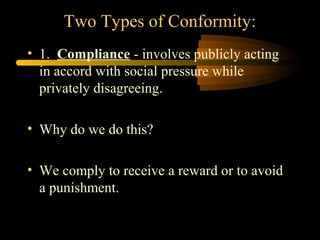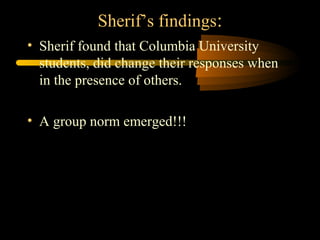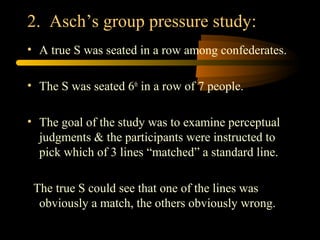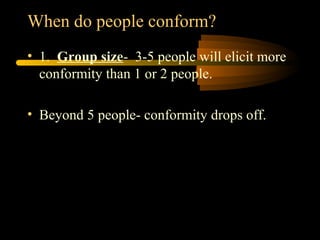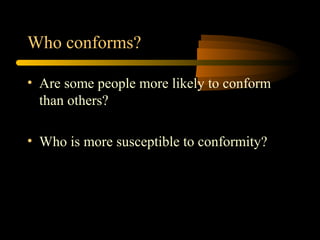1. Conformity is changing one's behavior or beliefs due to real or imagined social pressure from a group. It involves publicly agreeing with a group while potentially privately disagreeing (compliance) or fully adopting the group's beliefs (acceptance).
2. Classic studies on conformity include Sherif's experiments on norm formation, in which participants' estimates changed to match the group's responses, and Asch's line judgment study, where 75% of participants conformed at least once by agreeing with an incorrect group response.
3. In Milgram's obedience study, 65-66% of participants continued administering electric shocks to a learner even after being told by the experimenter to continue shocking to dangerous levels, showing


